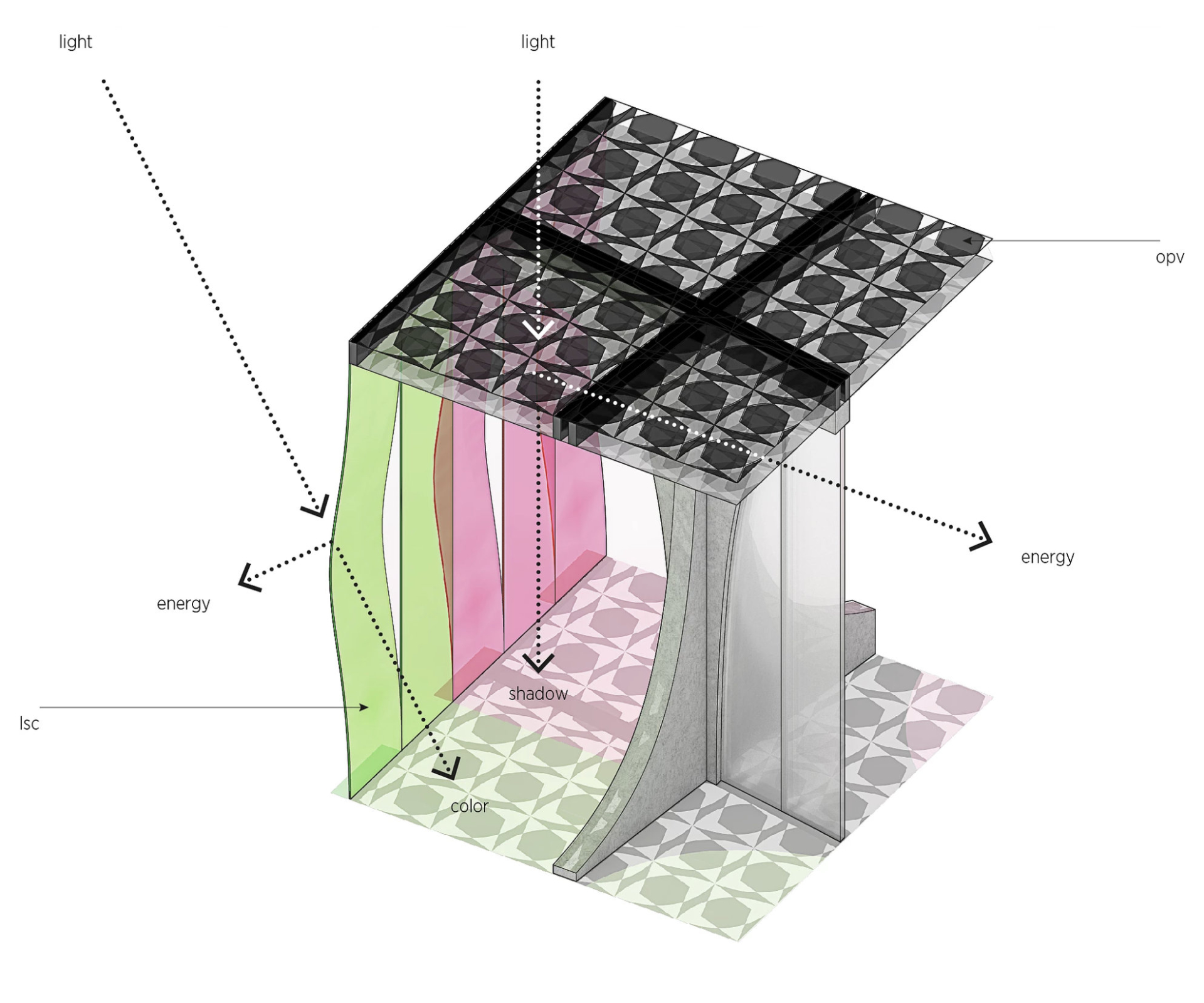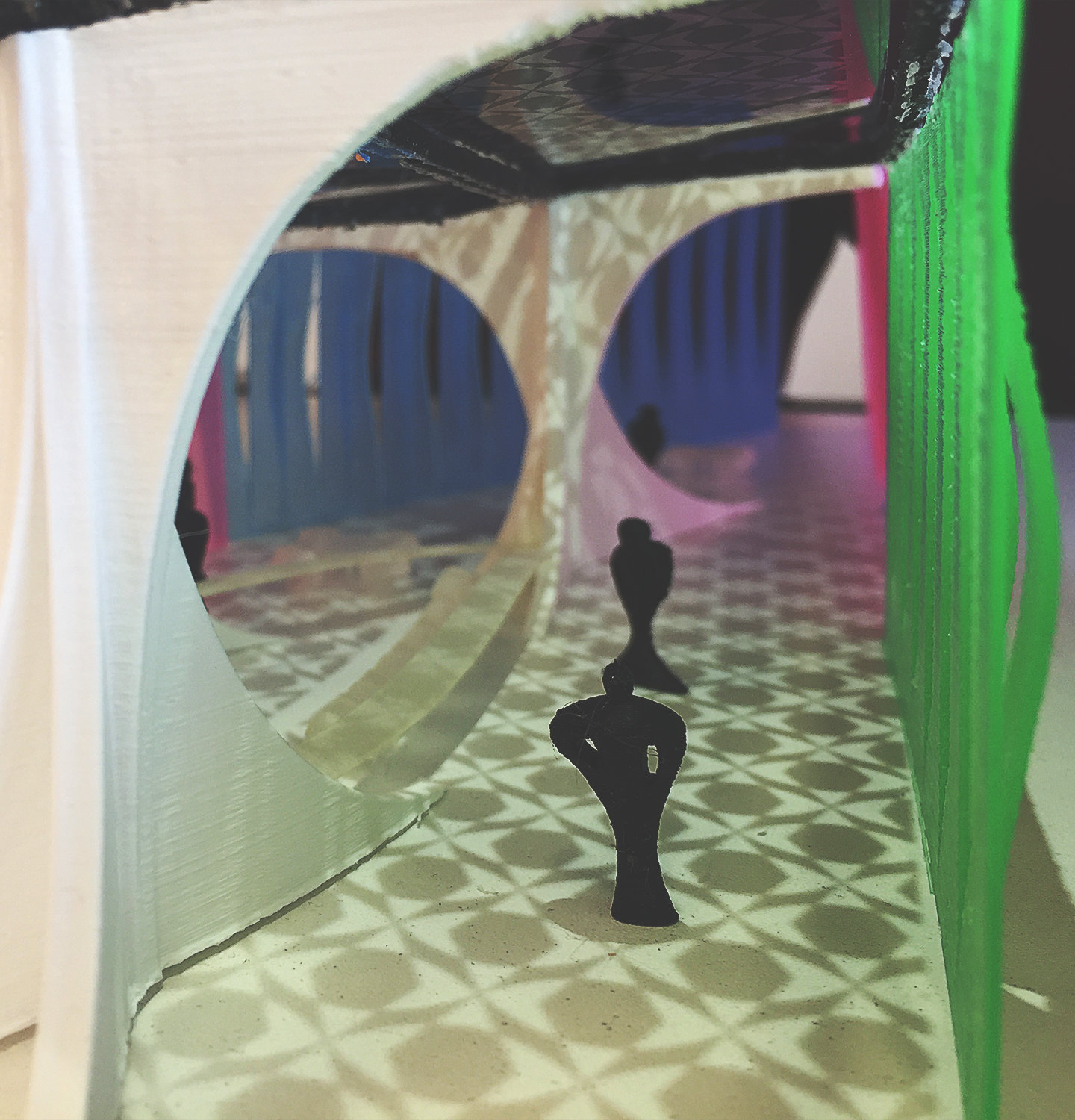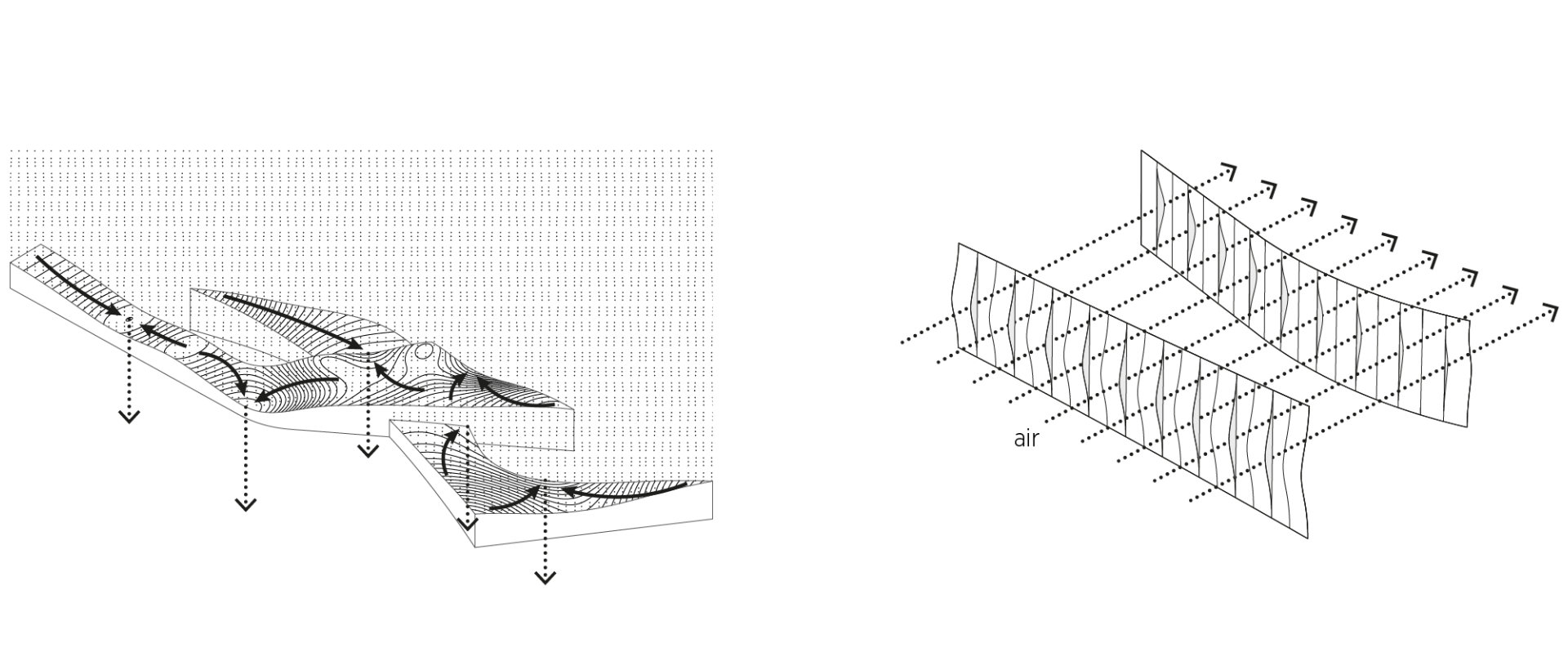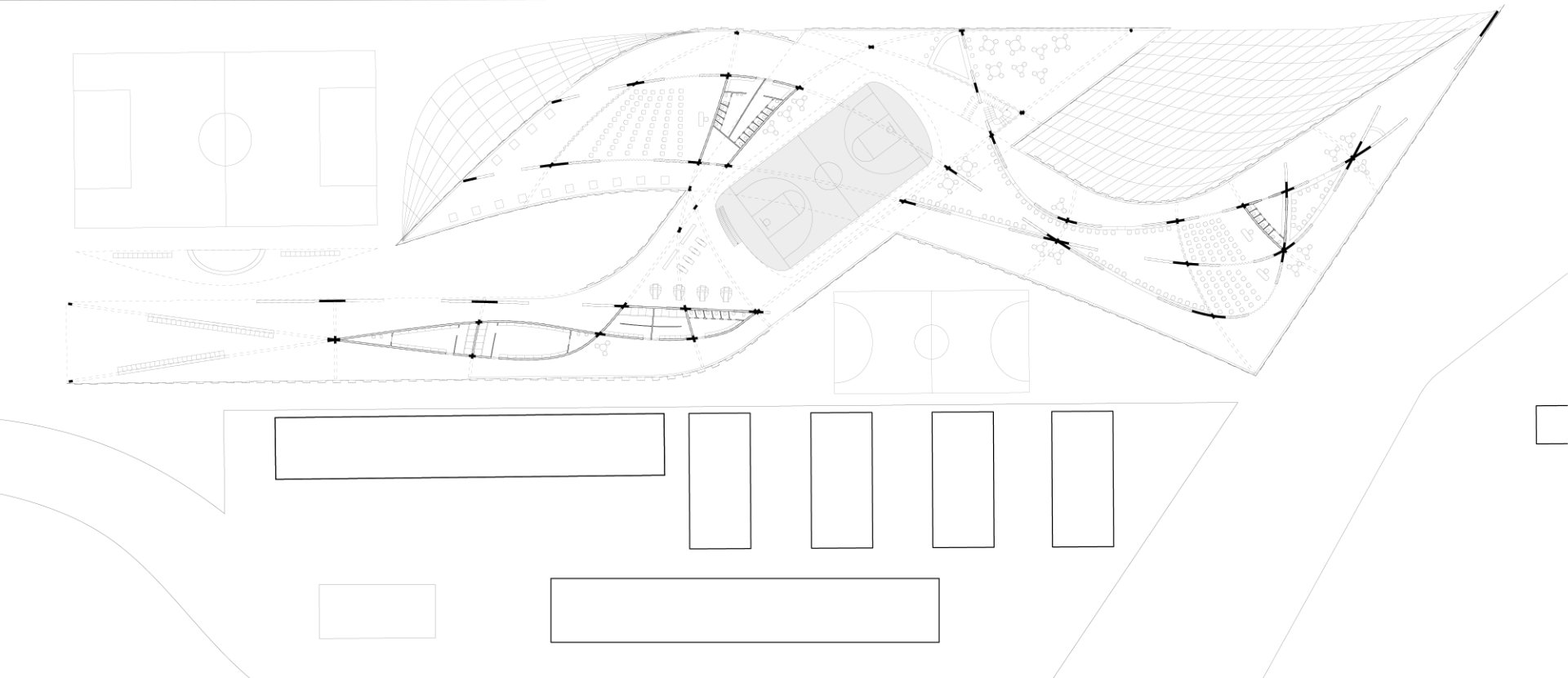Solar LHub
/ Interactive exploration of ENI solar technologies
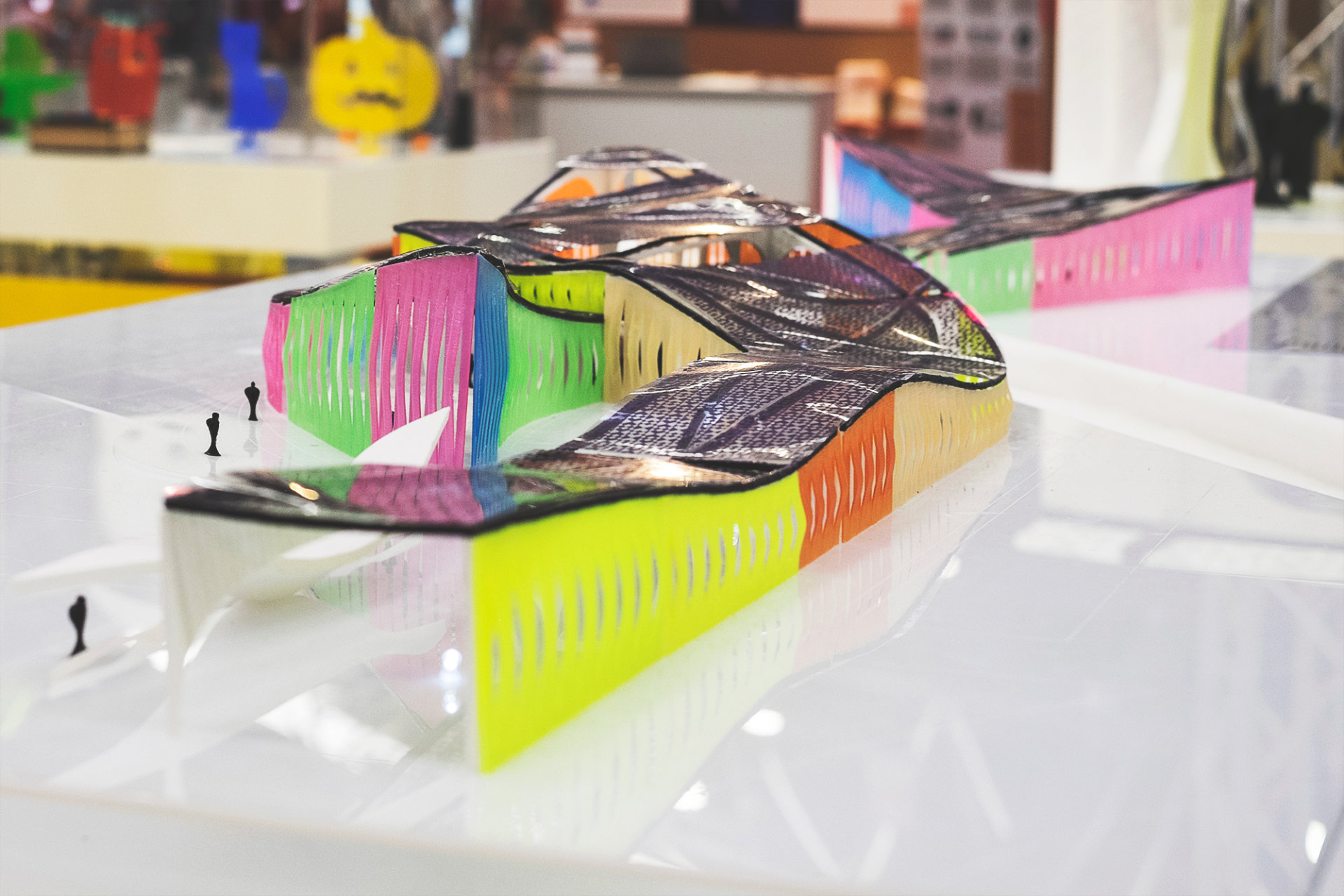
Made in collaboration with

Showcasing solar energy
Solar Hub was one of the three projects that ENI, an Italian multinational oil and gas company, commissioned +LAB to design and present at the 2016 edition of the European MakerFaire in Rome. The aim was to showcase two emerging technologies that ENI was developing at the time through its newly formed division focused on solar energy: OPV (Organic Photovoltaics) and LSC (Luminescent Solar Concentrators).
Organic Photovoltaics (OPV) is a type of solar technology that utilizes organic electronics to convert solar energy into electricity. These materials can be more flexible and potentially less expensive than traditional silicon-based solar cells, allowing for a wider range of applications, such as integration into building materials or consumer products. Luminescent Solar Concentrators (LSC) are designed to absorb sunlight over a large area, re-emit it at a different wavelength, and direct it towards a smaller, high-efficiency solar cell. The technology behind LSCs often involves the use of fluorescent materials and can be applied in situations where traditional solar panels are not practical, for example, in transparent windows that can still produce electricity.
The presence of these projects at Maker Faire 2016 was not just a demonstration of technological innovation but also served as an educational platform to engage a broader and younger audience in discussions about the potential and significance of renewable energy technologies.
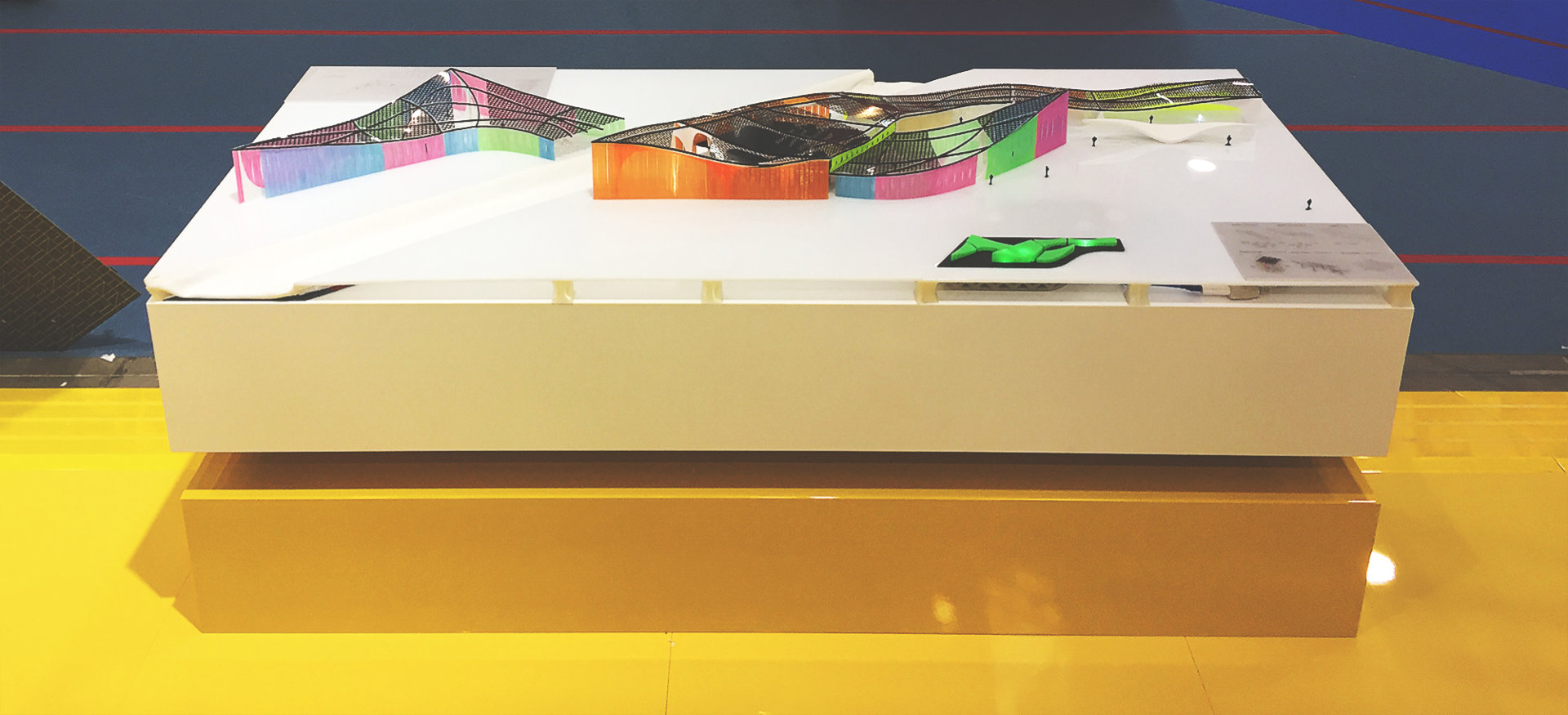
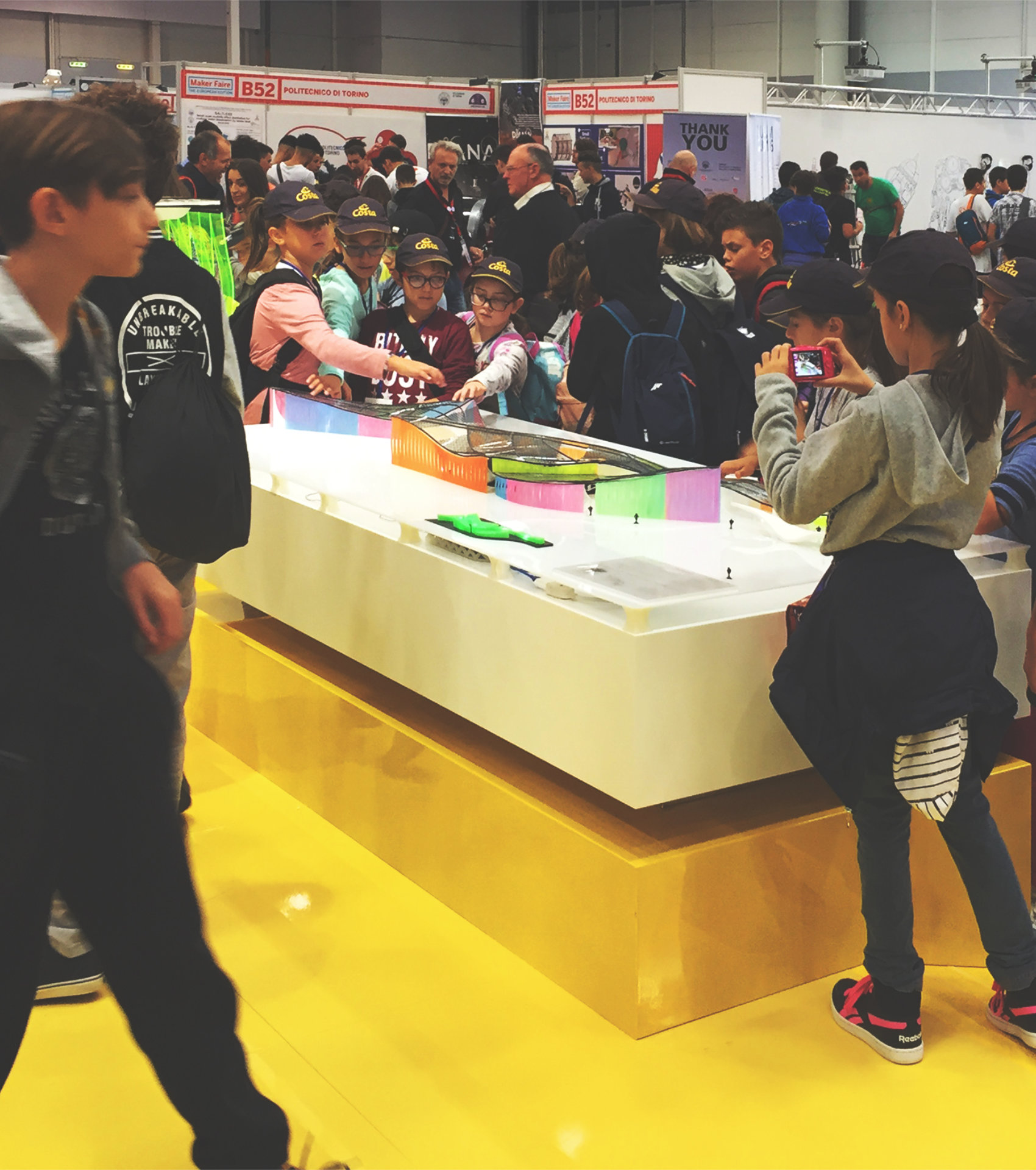
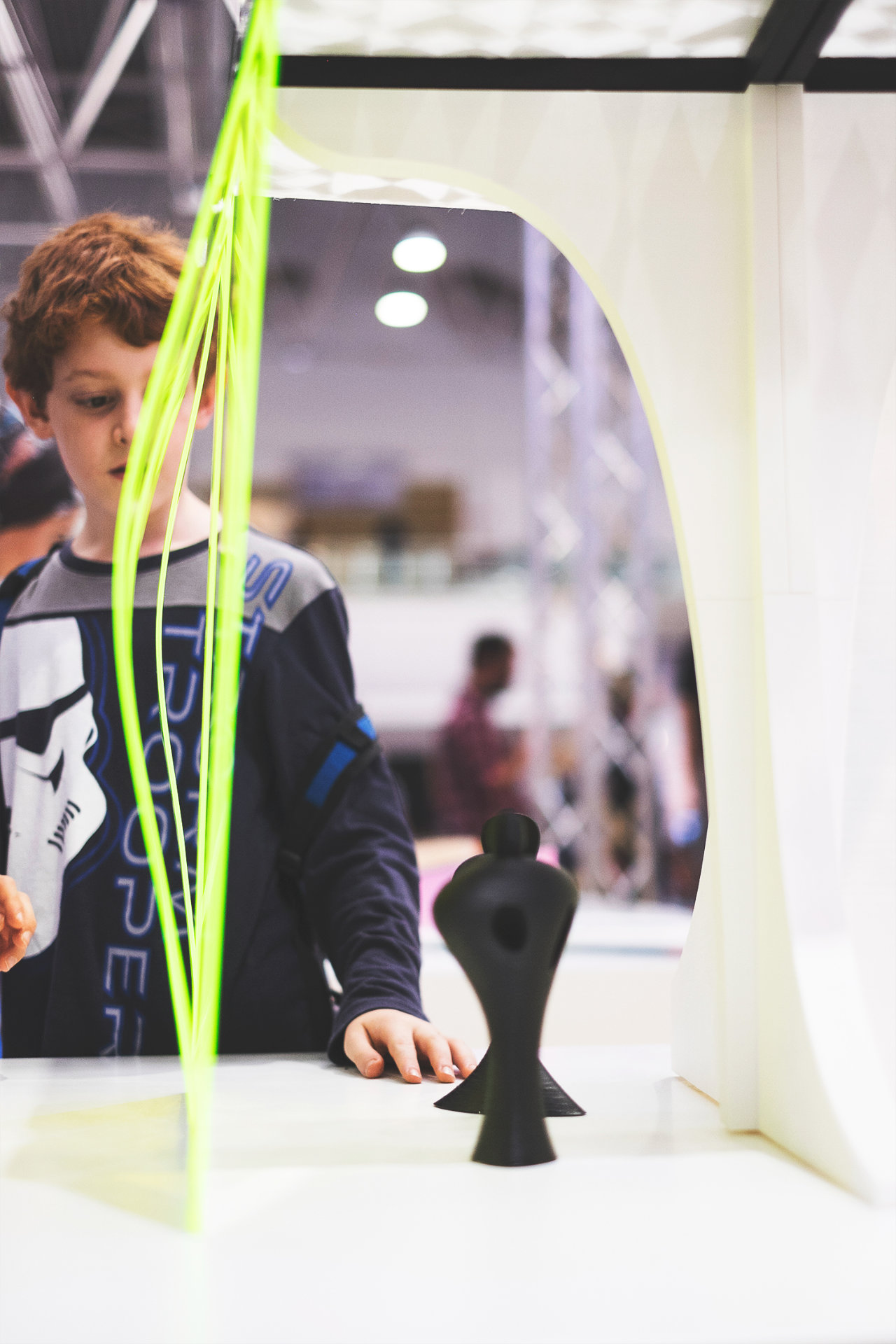
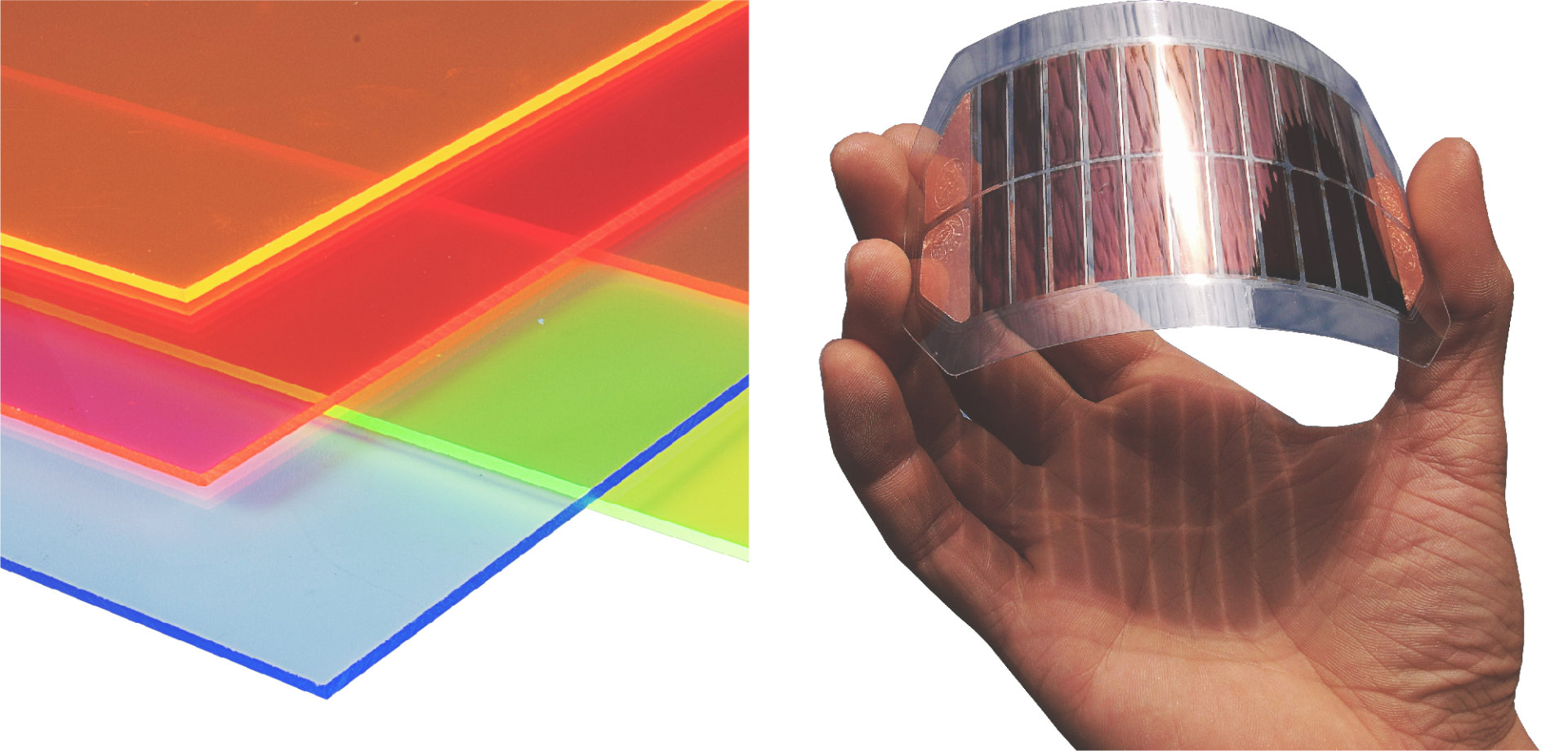
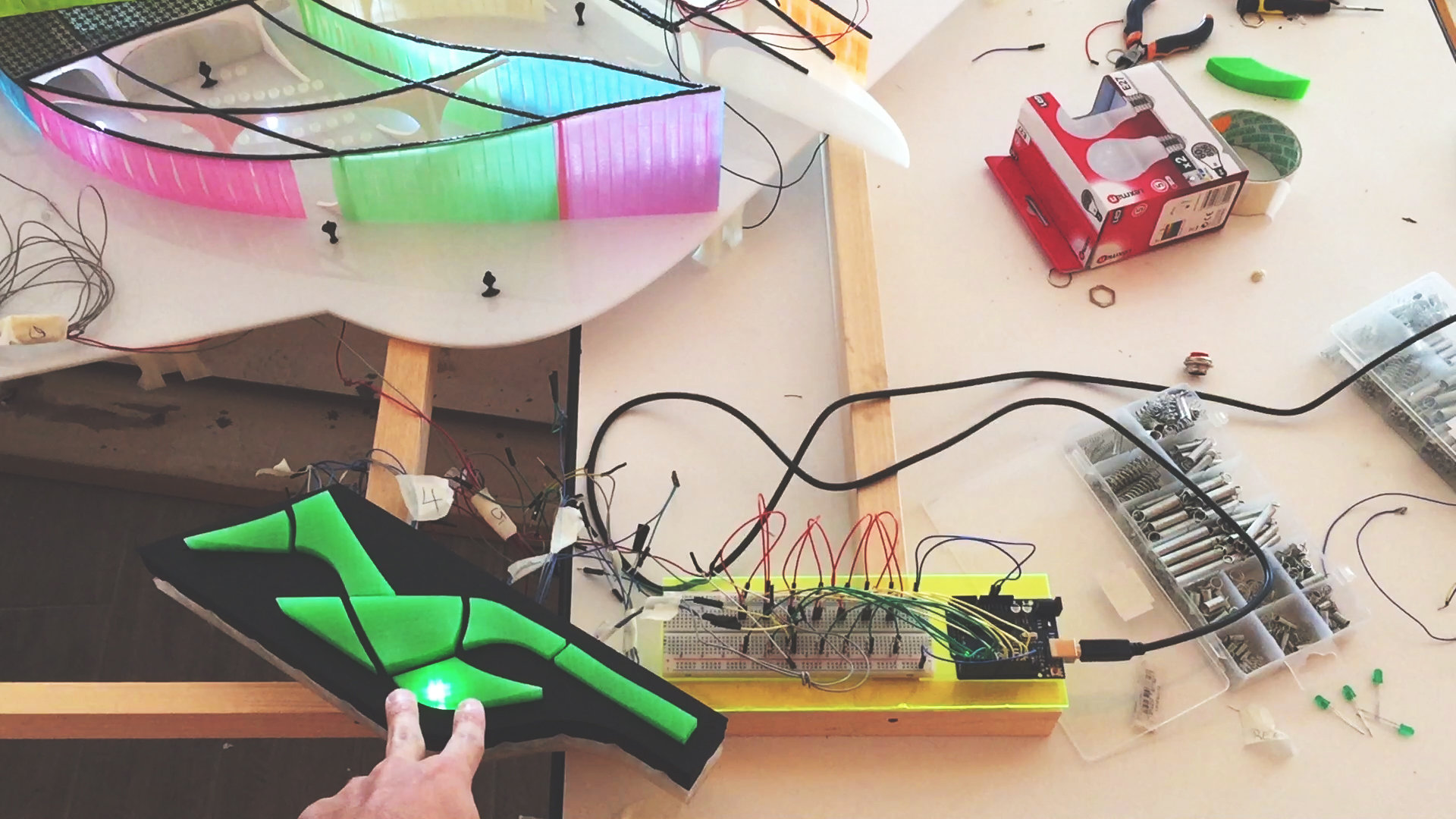
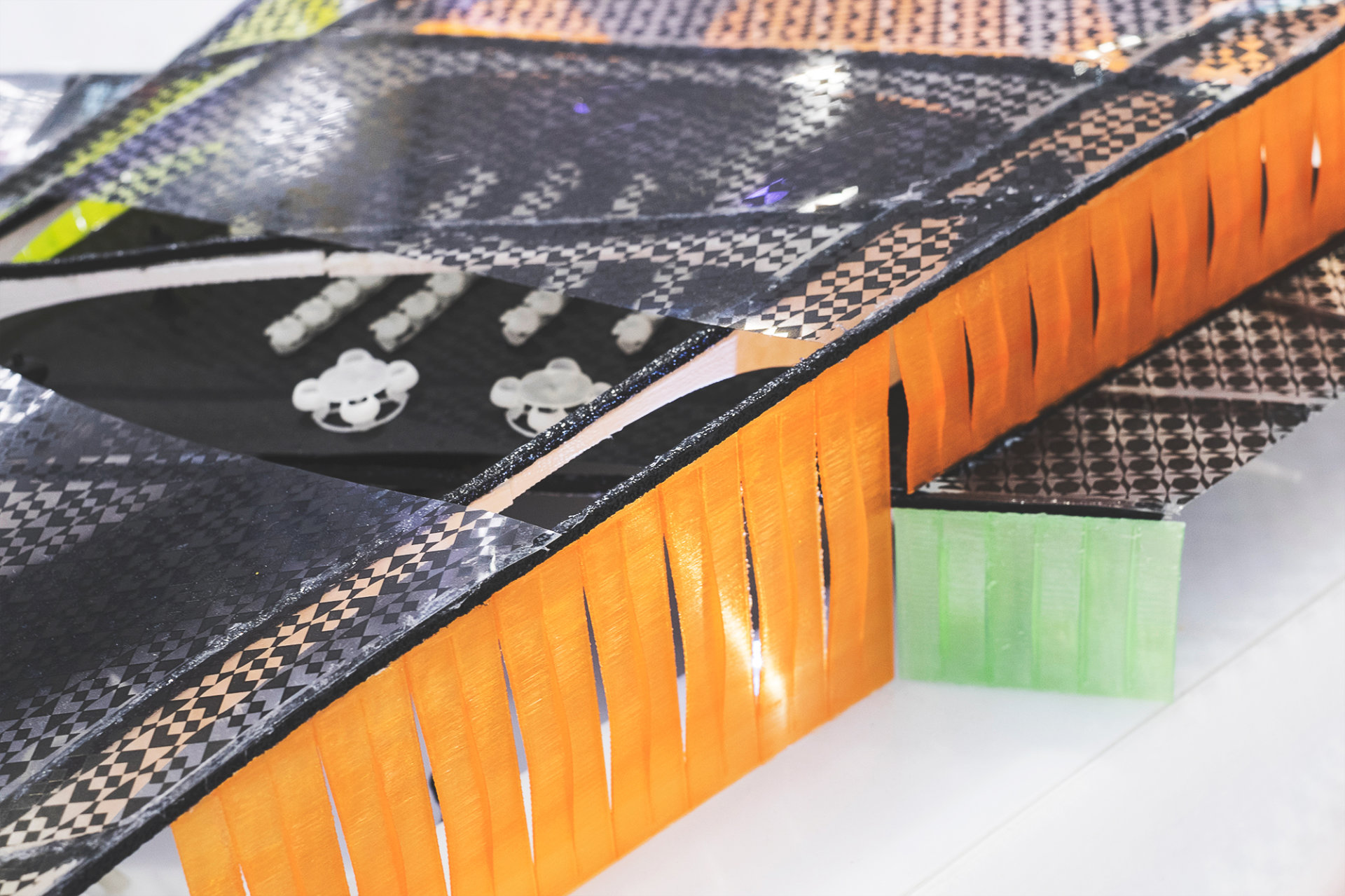
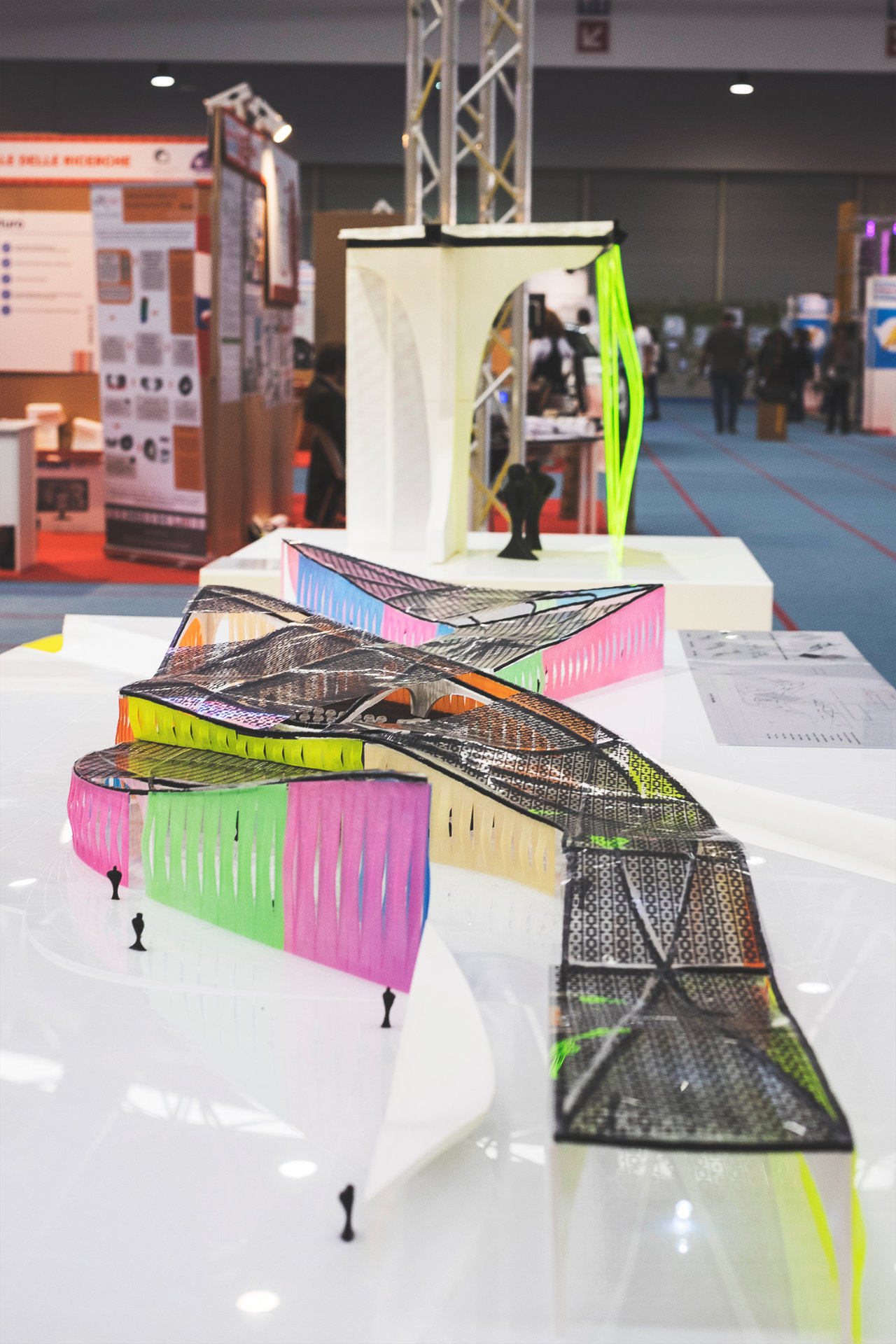
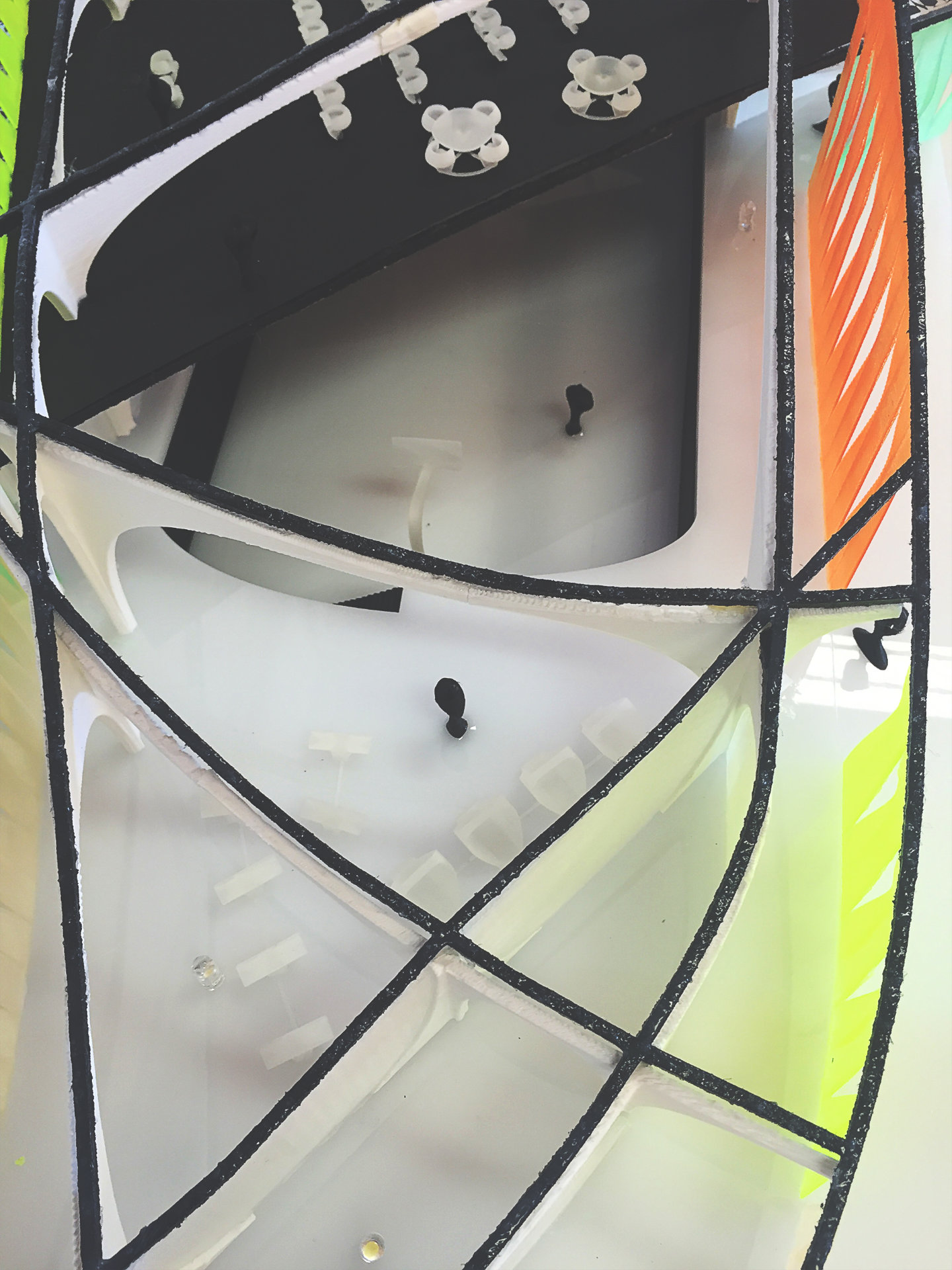
Interactive architecture display
We took the initiative to highlight the benefits and possibilities offered by two emerging technologies by designing and creating models for a conceptual recreation center, envisioned on a plot owned by ENI in South America.
We crafted two separate models: one representing the entire building and another focusing specifically on the facade. These models were designed to be interactive, featuring a 3D plan that allows viewers to toggle the interior lighting on and off, providing a dynamic way to engage with the design. These models were constructed using digital tools provided by +LAB and the resources of nearby fablabs.
Currently, these models are on display at ENI's headquarters in Milan.
Solar energy integration
The design of the building features a series of arches and reverse arches that define its spaces and functions without the need for physical barriers. This unique design ensures that from ground level, the building's shape creates a rhythmic visual experience, enhanced by the play of light and color. This effect is achieved through the use of OPV panels on the roof and LSC panels along the sides.
The roof's undulating form is made possible by these OPVs, which serve to expand or contract the space below to suit various activities. The angled roof not only captures light more efficiently but also is sloped to collect rainwater into pipes and storage tanks for later use. OPV panels are made from organic materials deposited in layers, creating a flexible alternative to conventional rigid silicon solar cells. This flexibility arises from a novel blend of polymeric materials.
On the other hand, the facade's design incorporates both thermoformed and flat LSC sheets, which help to facilitate natural air circulation through the created openings. LSCs are innovative components that allow light to be concentrated at the edges, where it is then collected by solar cells. This mechanism enables the building to harness sunlight across its extensive facade, boosting electricity generation without increasing the size of the solar cells themselves.
